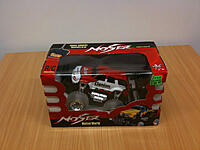Steven Harrap
Switch datption
Switch adaption for toys is the process of adjusting a (typically) battery operated toy so that its control points (buttons, touch sensitive surfaces etc) can be operated by children who are physically challenged. The child may have very limited hand and arm control and only be capable of simple actions. The child can press a large button but not the small buttons of a toy piano or the control sticks of a remote control car. A toys' control points are replaced or augmented by audio jacks to which large push buttons can attached on long cords. The child presses the large button and the toy performs the action that would have taken place when its standard control surface is used.
I have performed switch adaption for the Cerebral Palsy League (my employer) and have adapted many toys and devices for the leagues Electro Technology Support services. At the end of 2011 I was interviewed by the Courier Mail in regard to this aspect of my employment.
The controller for the radio controlled car was adapted so that 4 ports could each have a large button attached. Each port controls one direction for the car: forward, backward, left and right.
The toy piano has many control buttons and each button has been associated with a control port on the rear of the toy. The user can decid to provid the child with a few or many buttons. Part of the process of adapting a toy like the piano is to learn the control paths on the circuit board within the toy. This toy has many buttons but the board has manufacturing test points that can be used as nodes to join the wiring from the jacks.










